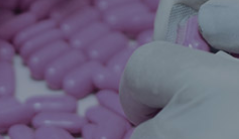Data Integrity Remediation
October 24, 2018

Overview
A Grantek client who manufactures and packages liquid pharmaceuticals needed to upgrade their data capture and storage capability on a tight schedule. Grantek worked on their original plant design almost 20 years ago and continued to provide various solutions in the years since then. This continuous relationship made Grantek very familiar with the setup of the facility.
Challenges
When the system was first installed, Grantek and the customer jointly determined data storage needs at the time. As was the standard practice, product data for each batch was stored only until the batch report was printed and approved. However, data integrity and storage requirements now being imposed by regulatory agencies require all production data, not just batch records, to be stored permanently.
Solution
First, Grantek performed an audit of production systems to determine which needed remediation in order to meet current regulatory requirements for production data capture and storage. Grantek then worked with the customer to redesign and upgrade the identified systems to collect and store individual data and metadata in addition to the batch reports. Grantek also worked with the client to remediate the systems which didn’t meet regulatory compliance.
Grantek’s methodology is to assess computerized systems which impact GMP in accordance with the U.S. Food and Drug Administration’s (FDA) draft guidance on Data Integrity and Compliance with cGMPGrantek’s auditing checklists and Grantek’s process follow the International Society for Pharmaceutical Engineering (ISPE) GAMP guidelines for data integrity. Current regulatory trends indicate that previously acceptable data collection systems no longer provide enough detail
For this time-sensitive project, Grantek provided a team of engineers working multiple shifts to complete the audit phase in approximately three weeks. Grantek was also contracted to perform software design for remediation of deficiencies identified in the audit. In addition to the system design changes, the project included GAMP documentation, such as Functional Requirement Specifications, Design Specifications, followed by protocols such as Factory Acceptance Tests (FATs), and Qualifications (IQ/OQ).
The data integrity audit determined that the required data existed. Grantek’s next step involved improving the system to ensure that data could be captured for long-term storage. Doing so required firmware updates to human-machine interfaces (HMI) and software upgrades to Supervisory Control and Data Acquisition (SCADA) systems. No significant hardware upgrades were necessary.
Grantek set up a test bench/sandbox environment at Grantek’s office, using tools developed internally to simulate performance of the machines controlled by the PLC systems impacted by the design changes. The simulations allowed Grantek engineers to step through the programming to see the impact of software design changes and to test proposed solutions before implementation onsite.
Grantek executed the design phase within one month, followed by execution of FAT protocols.
Results
Grantek’s unique data integrity auditing process, coupled with our long history as a system integrator at this customer site, enabled us to accurately scope the upgrade project and help ensure our customer’s success in implementing the data logging and reporting improvements needed to meet current regulatory requirements.
